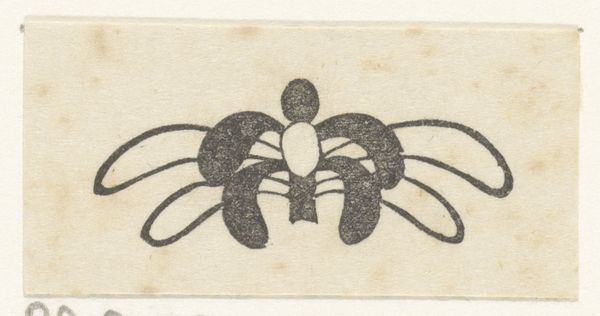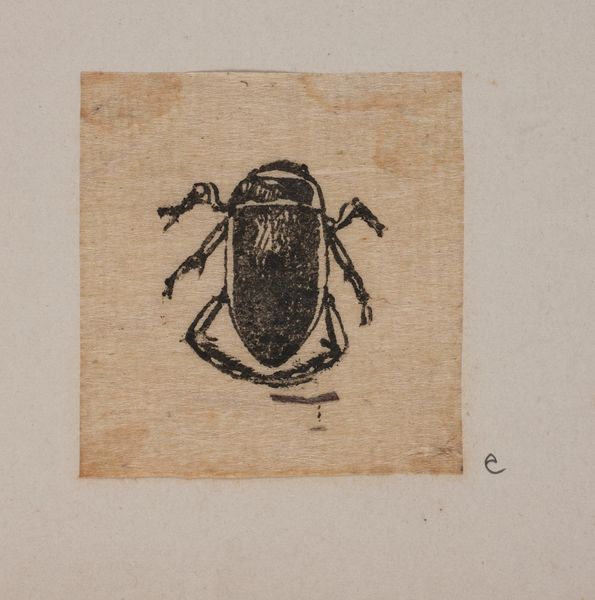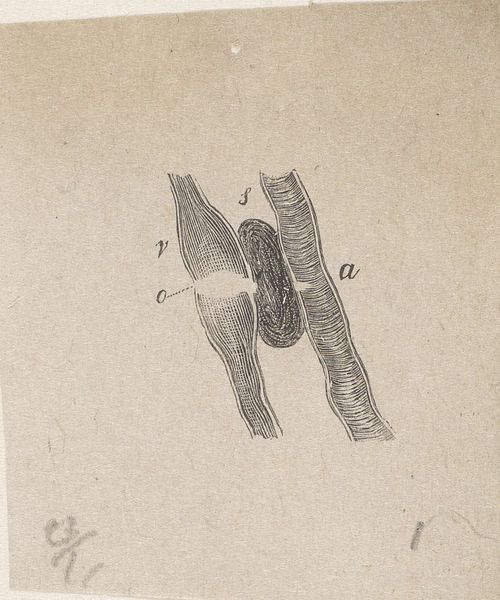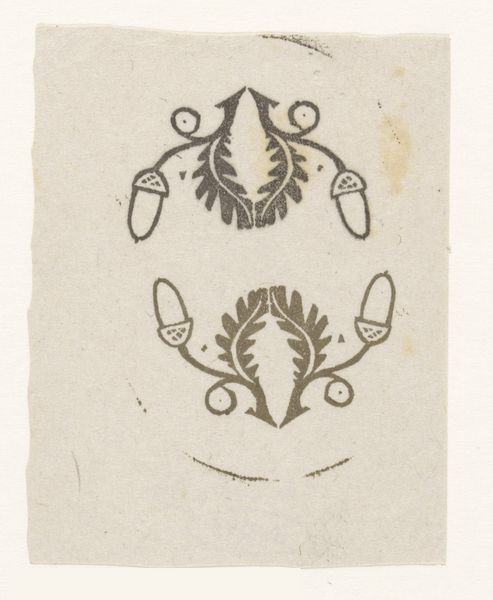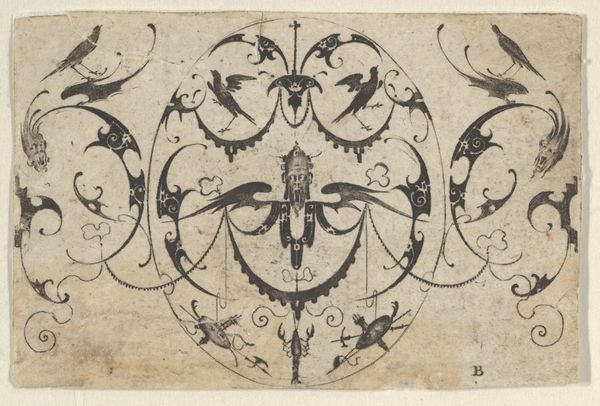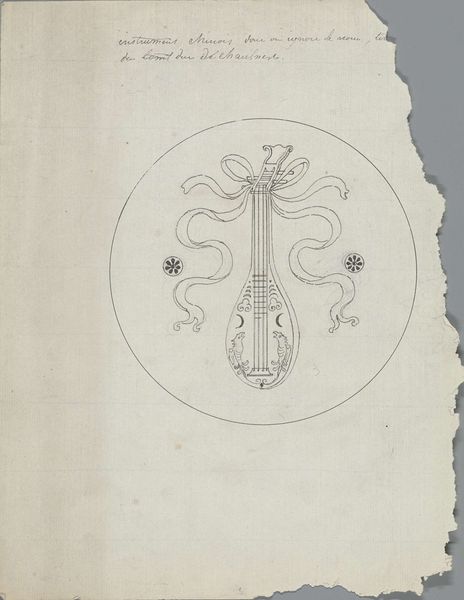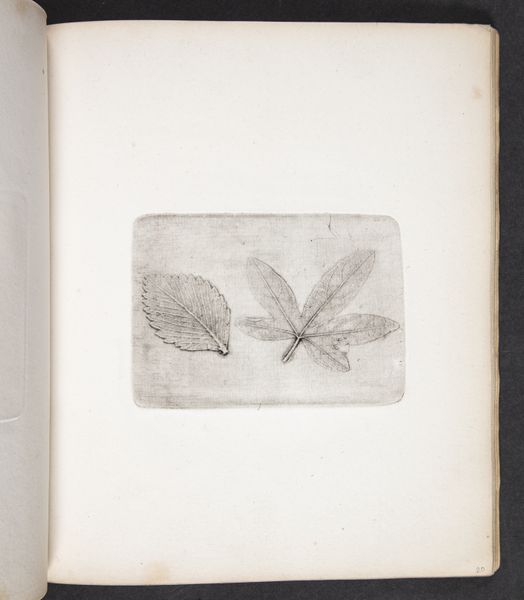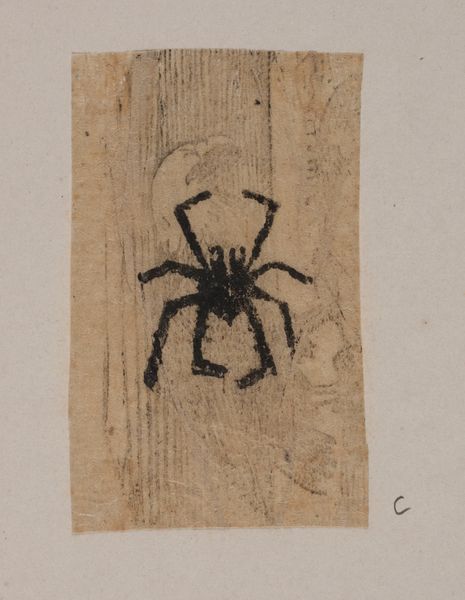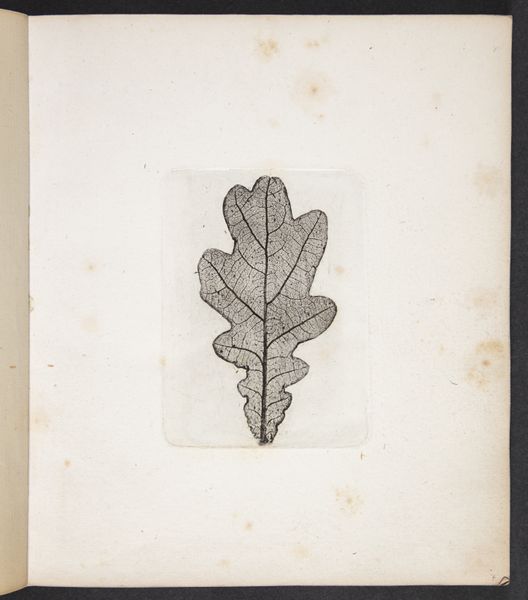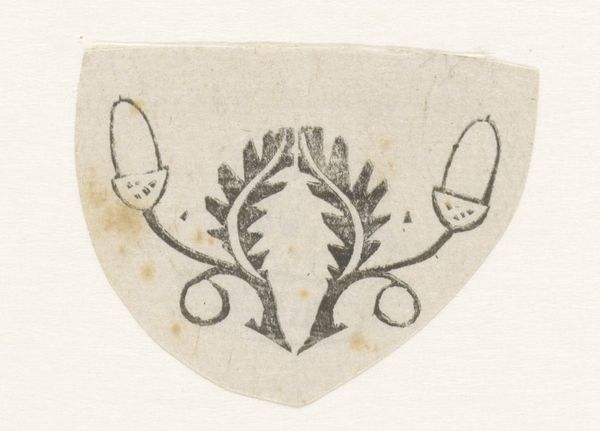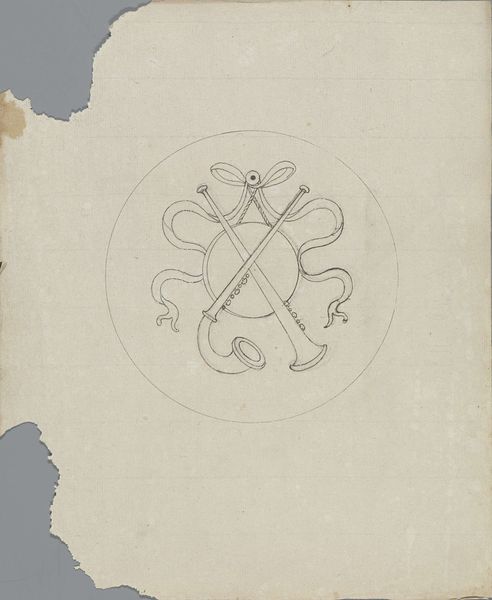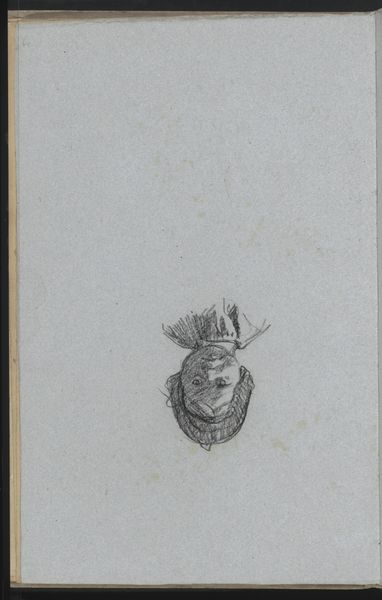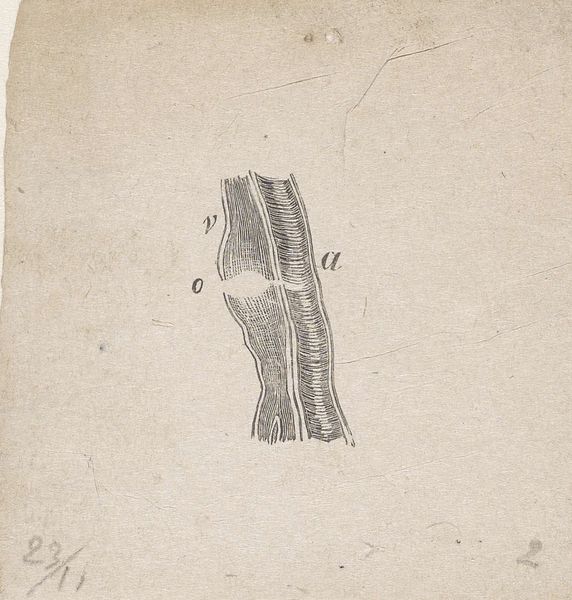
drawing, print, paper, ink, woodcut
#
drawing
# print
#
paper
#
form
#
ink
#
coloured pencil
#
geometric
#
woodcut
#
line
Dimensions: 53 mm (height) x 42 mm (width) (bladmaal)
Editor: This is "Insekt," a drawing, likely also a print, in ink on paper and possibly woodcut, made by Joakim Skovgaard between 1865 and 1870. It reminds me a bit of an ancient glyph. What do you see in this piece? Curator: I see a powerful symbol of societal structures. Skovgaard’s rendering, though seemingly simple, can be viewed as a critique of power dynamics. Think about the time this was created— the late 19th century was a hotbed of industrial and social change. The insect form, so rigidly geometric, suggests an almost mechanical conformity, doesn't it? Editor: Conformity? It's just a bug, though. Curator: But consider how insects often function in a collective, like worker ants or bees. Each part functions towards a larger purpose, individuality often suppressed. This can reflect societal expectations imposed upon individuals, particularly within a rapidly industrializing world. Do you think Skovgaard, perhaps subconsciously, felt stifled by the prevailing social norms? Editor: Possibly. So you're saying the lines and geometric forms, and insect itself, aren't just about the image but about… societal constraints? Curator: Exactly. It also pushes us to question our relationship with nature. Are we respecting it, or attempting to control and exploit it, similar to the insect’s implied subjugation within its colony? Editor: I never would have thought of an insect as representing all of that! Curator: That's the beauty of art, isn't it? It holds a mirror to society and nature and invites us to analyze not just what's depicted, but also the why and the how, within broader socio-political landscapes. Editor: Definitely something to think about further. It has become very insightful.
Comments
No comments
Be the first to comment and join the conversation on the ultimate creative platform.
